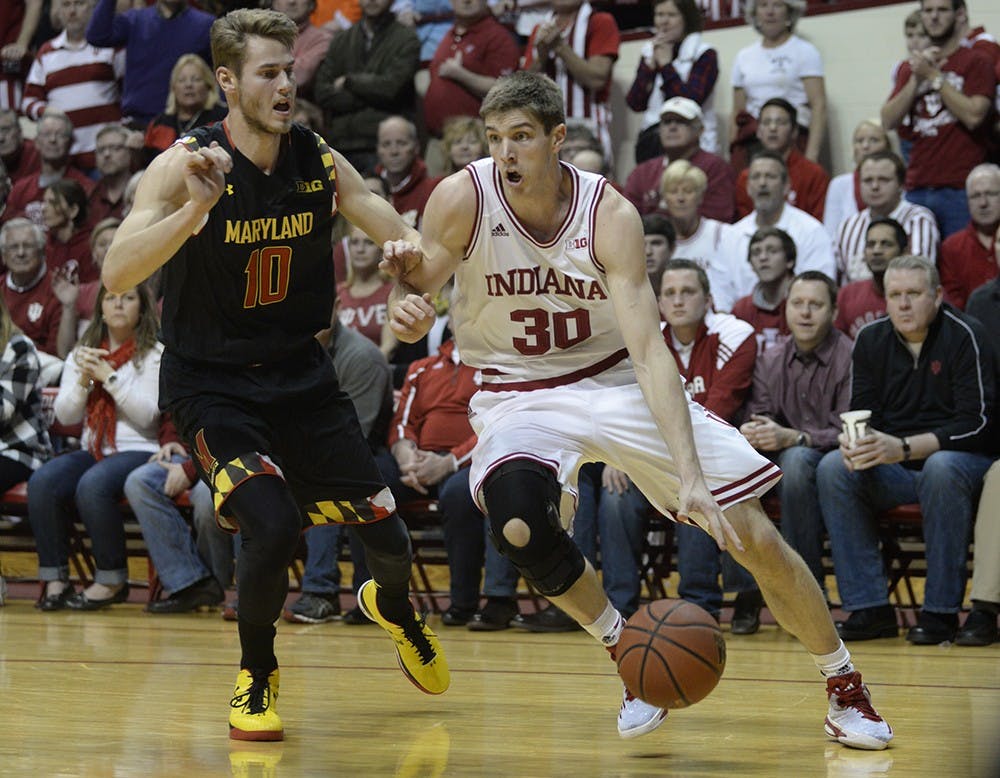When No. 22 IU (15-5, 5-2) and Purdue (12-8, 4-3) meet at 9 p.m. in Mackey Arena in West Lafayette, the teams will be playing in the epitome of a matchups game.
IU will rely on its small ball lineup while Purdue counters with a pair of 7-foot centers in AJ Hammons and Isaac Haas.
Purdue’s big men situation is rare in today’s game. Only three other teams in the country have two 7-footers on the same roster. It’s a worst-case matchup scenario for a small team like IU.
Yogi Ferrell knows they’re coming, too. The junior guard expects Purdue to throw the ball into the post and dare IU to beat them. He doesn’t blame them either.
If he were Purdue Coach Matt Painter, he’d do the same thing.
“I’d say any team would have that mindset knowing how small we play,” Ferrell said. “That’s what I would do, personally, if I was a coach. Try and pound it inside ... What we’ll do is just prepare very well for their bigs.”
But preparing for two 7-footers is a bit of a challenge for IU, considering the tallest player on the active roster is 6-foot-11 freshman center Jeremiah April.
After 6-foot-9 freshman forward Tim Priller, nobody else is listed taller than 6-foot-7.
Coming off the bench but still serving as the primary center, Hammons is averaging 10.7 points and 6.1 rebounds per game. Haas has been nearly as effective, grabbing 9.5 points and 4.4 rebounds in a little more than five minutes fewer than Hammons per game.
IU, a small team to begin with, has played even smaller for four games since junior forward Hanner Mosquera-Perea suffered a knee injury.
But the combination of the 7-foot Hammons and the 7-foot-2 Haas will force IU to get creative defensively as IU has no obvious answer to defend the two centers.
Ferrell said the key will be for undersized forwards like sophomore Collin Hartman to establish defensive position early and not allow the big men to dictate the half-court offense.
If the Hoosiers can speed up the pace, the Boilermakers will have fewer opportunities to throw the ball into the paint.
On the flip side, IU will try to create matchup problems of its own. The Hoosiers will respond to size with quick guards, hoping to neutralize the size advantage by playing around the perimeter and using speed to blow by the larger Purdue players.
Using smaller players against the Purdue bigs works two-fold. It allows IU’s guards and wings to isolate a defender one-on-one and attack the rim without worrying as much about help defense and could also create open looks on the perimeter if Hammons or Haas stays inside.
The Boilermakers are already 277th in the country in defending 3-pointers, where IU scores 34 percent of its points.
Painter sees that as a problem already and said he expects IU to attack from long distance.
“This is probably the biggest extreme we will have and the biggest extreme they will have in Big Ten play in terms of who’s going to have to adjust,” Painter said. “I think both teams will have to adjust.”
Purdue is 1-3 against teams currently ranked in the top-25. It is coming off a 67-63 win against No. 25 Iowa and now looks to add another ranked win to their season.
IU is trying to bounce back from a 82-70 loss to Ohio State only three days after convincingly defeating No. 13 Maryland 89-70.
The Hoosiers have yet to lose two straight games this season.
Dictating the game will be pivotal. Crean said the game should be fun to watch because both teams will be struggling to enforce their styles of play and control the pace.
He added he’s looking forward to the challenge, but he’s still not quite sure what will happen. IU has dealt with dominant centers before this season, but never two on the same team.
So Crean was asked point blank: Can IU’s quickness and shooting beat Purdue’s size?
“I don’t know, they’re really big,” Crean said. “We’re gonna find out.”






